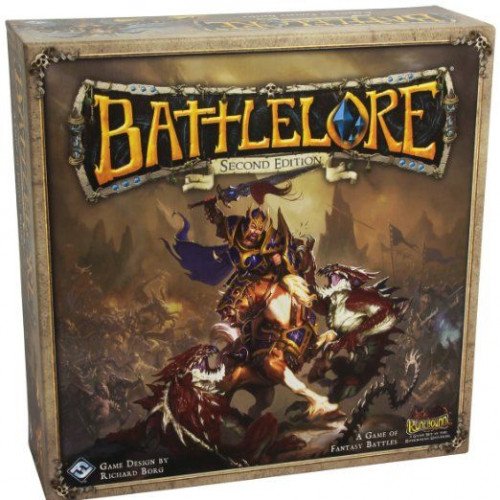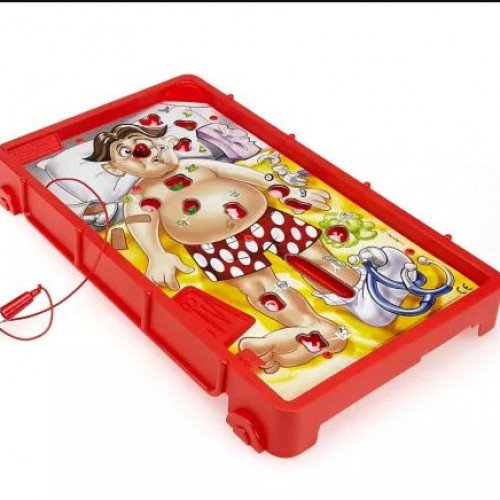BATTLELORE VS OPERATION

BATTLELORE
BattleLore is a strategy board wargame for two players, created by Richard Borg and initially published by Days of Wonder in 2006 (and later by Fantasy Flight Games). The game is based on the same mechanics as Battle Cry, Memoir '44 and Commands & Colors: Ancients, but has a fantasy and medieval theme. BattleLore debuted at the 2006 Spiel game fair in Essen, Germany and was released worldwide on November 30 of that year. Typical setup for a game is 10–15 minutes. Beginning players can expect a 45-60 minute duration game, but experienced players can usually finish a game in about 30–45 minutes. Each player has a set of quick reference cards to help him keep rules in mind. Experienced players will rarely have to pull out the rulebook for clarification. The scenario book that comes with the basic box is organised as a tutorial sequence that introduces concepts one adventure at a time, making the game very easy to learn. Each adventure in Battlelore is pre-constructed, leaving the work of creating armies to the scenario author. Although with the Call to Arms Expansion (released May 2007) the players have (limited) control on deploying units to any given scenario. The Battlelore website offers an online scenario builder that helps fans create their own adventures. In September 2008 Fantasy Flight Games and Days of Wonder announced that the game would be moving to Fantasy Flight Games, along with all remaining stock. In 2013, a revised version, BattleLore Second Edition, was released by Fantasy Flight Games.
Statistics for this Xoptio

OPERATION
Operation is a battery-operated game of physical skill that tests players' hand-eye coordination and fine motor skills. The game's prototype was invented in 1964 by John Spinello, a University of Illinois industrial design student at the time, who sold his rights to the game to renowned toy designer Marvin Glass for a sum of US$500 and the promise of a job upon graduation (a promise that was not upheld). Initially produced by Milton Bradley in 1965, Operation is currently made by Hasbro, with an estimated franchise worth of US$40 million. The game is a variant on the old-fashioned electrified wire loop game popular at funfairs. It consists of an "operating table", lithographed with a comic likeness of a patient (nicknamed "Cavity Sam") with a large red lightbulb for his nose. This could be a reference to classic cartoons, where ill characters' noses turn red. In the surface are a number of openings, which reveal cavities filled with fictional and humorously named ailments made of plastic. The general gameplay requires players to remove these plastic ailments with a pair of tweezers without touching the edge of the cavity opening. Operation includes two sets of cards: The Specialist cards are dealt out evenly amongst the players at the beginning of the game. In the U.S and Australian version, players take turns picking Doctor cards, which offer a cash payment for removing each particular ailment, using a pair of tweezers (dubbed “Electro Probe” in earlier versions) connected with wire to the board. Successfully removing the ailment is rewarded according to the dollar amount shown on the card. However, if the tweezers touch the metal edge of the opening during the attempt (thereby closing a circuit), a buzzer sounds, Sam's nose lights up red, and the player loses the turn. The player holding the Specialist card for that piece then has a try, getting double the fee if he or she succeeds. Since there will be times when the player drawing a certain Doctor card also holds the matching Specialist card, that player can purposely botch the first attempt in order to attempt a second try for double value. The winner is the player who holds the most money after all the ailments are extracted. Subsequent later games removed the money and cards, and the winner of these editions is the player who removes the most ailments.